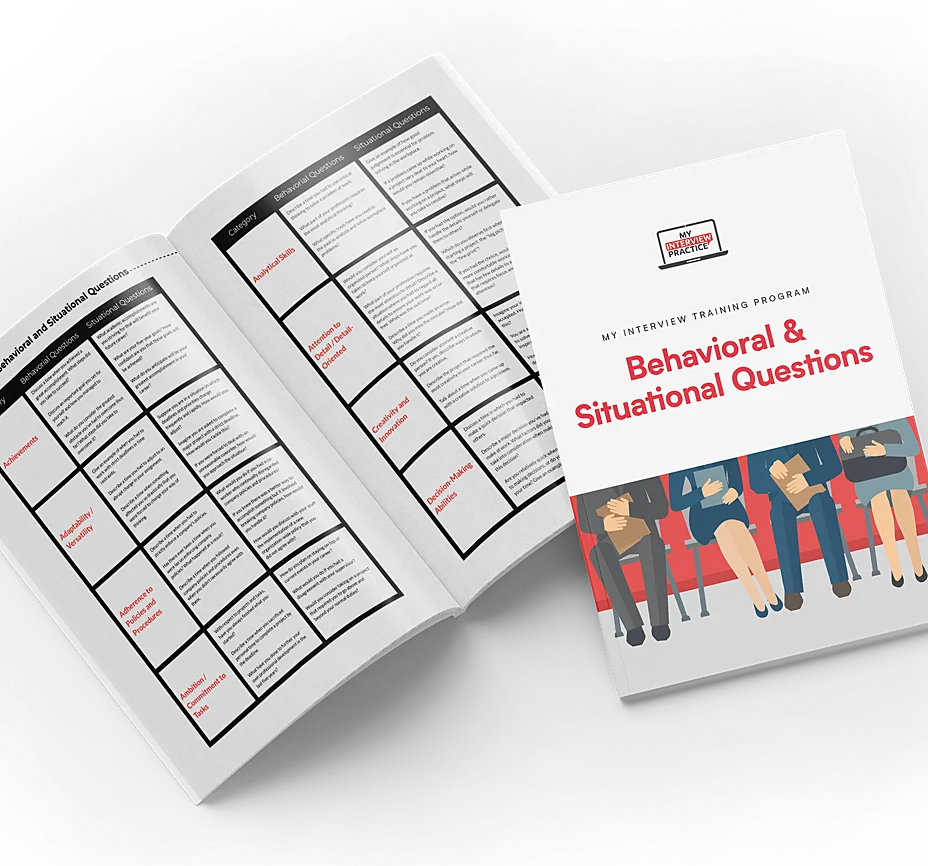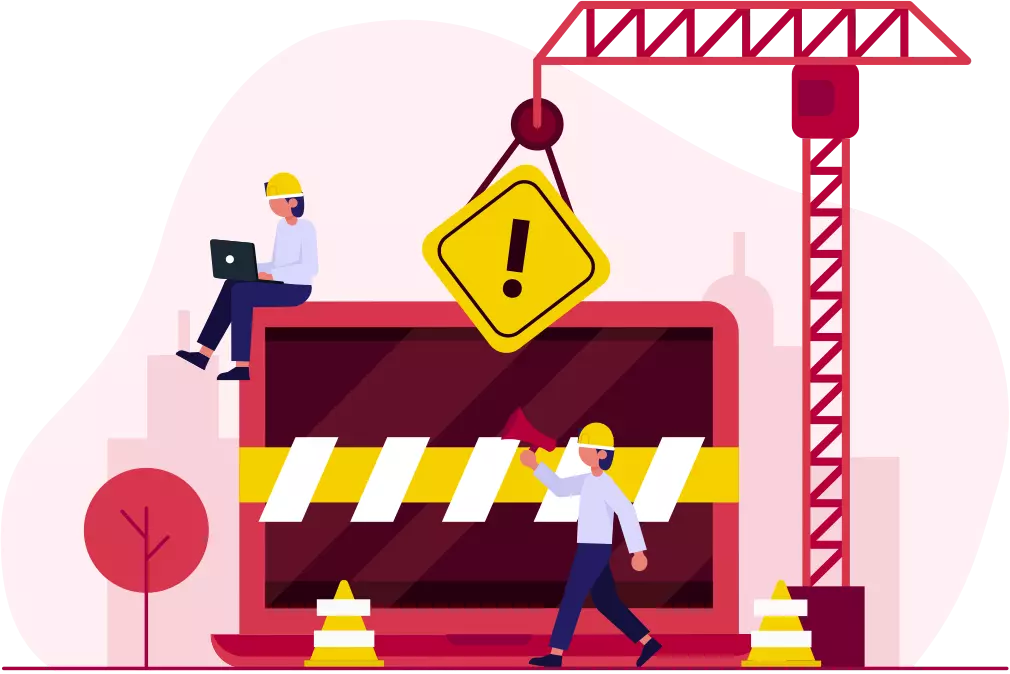 BACK
BACK
Systems Administrator Interview Questions
Every smooth-running business has one thing in common: someone behind the scenes keeping systems secure, updated, and online. That someone is usually a systems administrator. From patching vulnerabilities and managing user permissions to responding to outages and scaling infrastructure, sysadmins are often the quiet backbone of an organization's tech stack.
If you're heading into a systems administrator interview, expect to be tested on more than technical knowledge. Employers want to see how you approach troubleshooting, handle stress, prioritize tasks, and collaborate across departments. The questions below reflect the real-world scenarios you're likely to face. Use them to sharpen your thinking and prepare responses that show both your expertise and your ability to keep critical systems running under pressure.
1. What personal traits make you a strong systems administrator?
Interviewers want to see which qualities set you apart in IT projects and how your strengths support your daily responsibilities. This is your chance to highlight attributes like attention to detail, curiosity, and your drive for continuous learning.
Example Answer
I'm extremely detail-oriented and enjoy solving complex problems, which helps me quickly identify and address system anomalies. My curiosity drives me to stay updated with the latest technologies and best practices. I also pride myself on being a clear communicator, which is critical when translating technical issues for non-technical colleagues. These qualities have helped me build trust with both users and leadership throughout my career.
2. How do you resolve an issue when a website is down, but you can telnet to its port?
This question probes your step-by-step troubleshooting process and network fundamentals. Employers want to see how methodical and efficient you are when narrowing down the cause of a service outage.
Example Answer
If I can telnet to the web server port, I know the network is up, but the web service itself may be at fault. I check the server logs for application or resource errors, verify that the web service is running, and try accessing the site using curl or a browser. If I find resource exhaustion or a stuck process, I address it and restart the service. I always document my troubleshooting steps for future reference.
3. Can you discuss a time you tried to fix a problem, but your attempt failed?
Here, you're expected to reflect on a setback and show how you responded and grew from the experience. The interviewer wants to know that you can learn from mistakes and adapt your methods.
Example Answer
Once, I attempted to restore access to a critical server suffering login failures. Despite my troubleshooting, I couldn't resolve it on my own. I called in a senior admin, who spotted a misconfigured authentication parameter that I'd overlooked. I learned the value of using a documented checklist and now ensure every major issue is approached methodically and collaboratively.
4. Why is it risky to restore a domain controller from a backup older than six months?
The focus here is on your knowledge of best practices in Active Directory and disaster recovery. Employers need to know you understand the risks of data inconsistency and replication issues.
Example Answer
Restoring a domain controller from an outdated backup can introduce obsolete user accounts and cause conflicting data, which may disrupt replication across the network. Best practice is to use recent backups, ideally less than 180 days old, to maintain consistency and avoid "lingering object" issues that can be difficult to resolve.
5. What IT support experience are you most proud of?
This question is designed to highlight your ability to deliver results and handle high-pressure situations. You're being asked to share a story that shows your technical strengths and what you value in your work.
Example Answer
I'm proudest of leading our company's migration to cloud-based email. I mapped out each phase in detail, provided extensive user training, and ensured clear communication at every step. The migration finished ahead of schedule and with zero downtime, greatly improving user satisfaction and overall system reliability.
6. What's the most challenging IT issue you've resolved?
Interviewers want to understand your approach to tough technical challenges and your persistence in finding solutions. They are seeking a real-world example of your analytical and problem-solving skills.
Example Answer
The most difficult issue I faced was tracking down intermittent network errors affecting a production server. The errors wouldn't appear during testing, so I set up continuous monitoring. Eventually, I traced the issue to a failing network card that only acted up under high load. Replacing the hardware solved the problem, teaching me the importance of data-driven investigation and patience.
7. How would you explain the difference between Active Directory and LDAP?
This question examines your ability to clearly define core directory technologies. Employers want to know that you can break down technical concepts with accuracy and confidence.
Example Answer
LDAP is a protocol used to query and manage directory information. Active Directory is Microsoft's implementation of a directory service, built on LDAP but with added features like Group Policy and security integration. While LDAP can work with many directory services, Active Directory provides a complete, centralized management solution for Windows environments.
8. What are the key characteristics of different RAID levels?
Here, you're expected to showcase your understanding of storage systems, reliability, and performance tradeoffs. The goal is to ensure you can choose and explain RAID configurations in practical scenarios.
Example Answer
RAID 0 offers fast performance with striping but no data protection. RAID 1 mirrors data for redundancy, protecting against disk failure. RAID 5 combines striping and parity, allowing a single drive failure with balanced speed and safety. RAID 6 adds double parity for tolerance of two failures, and RAID 10 blends striping and mirroring for both speed and high reliability.
9. After logging into a Unix server, what are your first diagnostic steps?
This explores your standard workflow and command-line expertise when evaluating server health. Interviewers want to see a systematic, thoughtful approach to monitoring and diagnostics.
Example Answer
When I log in, I immediately run top to check CPU and memory, df -h for disk space, and netstat for network activity. I check who is logged in and review syslog or dmesg for errors. This routine helps me quickly spot and prioritize any issues before diving deeper.
10. How do you run and manage processes in the background on Linux?
The focus is on your technical skills with Linux process management and efficiency. Employers are looking for practical knowledge of multitasking in Unix environments.
Example Answer
To run a process in the background, I add an & at the end of the command. I use jobs to list all background processes, fg or bg to move them between states, and kill to stop any process by PID. This allows me to multitask and optimize system resources without interrupting user workflows.
11. What are the risks of allowing widespread root access?
Interviewers want to evaluate your understanding of security, user privileges, and the principle of least privilege. They expect you to explain how you manage risk in sensitive environments.
Example Answer
Allowing broad root access exposes the system to accidental misconfiguration or malicious actions. Only experienced admins should have root, and I always use sudo for granular permissions and logging. Limiting access greatly reduces the risk of critical errors and helps maintain system security.
12. How have you used your knowledge of operating systems to improve a network?
This question seeks insight into your ability to apply OS expertise for measurable improvements. Employers want a real example that shows your initiative and impact.
Example Answer
I standardized updates and maintenance scripts across Windows and Linux servers, which greatly reduced unexpected downtime. By automating these tasks, troubleshooting became faster and more consistent, improving overall reliability and freeing up time for strategic projects.
13. What is UDP, and when would you use it?
Here, the interviewer is testing your networking knowledge and your ability to explain protocols. You're being asked to clarify when UDP is preferred over TCP for specific applications.
Example Answer
UDP is a fast, connectionless protocol that transmits data without guaranteeing delivery or order. It's ideal for real-time apps like streaming, gaming, or VoIP, where occasional packet loss is acceptable and speed is more important than perfect reliability.
14. How would you reset a user's password in Active Directory or Linux?
This question is about your familiarity with daily administrative tasks and security practices. Employers want to see your methodical, user-friendly approach to account management.
Example Answer
In Active Directory, I open the user's profile in the admin console and use the reset password function, ensuring compliance with policy. On Linux, I run sudo passwd [username] in the terminal. I always verify user identity and communicate the new password securely.
15. How do you ensure regular system backups and data recovery?
The interviewer is assessing your ability to protect critical data and respond to failures. They want to understand your backup strategies and commitment to recovery readiness.
Example Answer
I implement automated daily backups to secure off-site storage. I regularly test restores to confirm data integrity and keep detailed documentation of backup and recovery procedures. Multiple copies and regular validation ensure we're prepared for any data loss scenario.
16. Can you describe the process for setting up a new user account across systems?
Interviewers want to see your focus on consistency, security, and documentation when onboarding new users. Your answer should show a clear, step-by-step approach to account provisioning.
Example Answer
I create the account using a directory service or script, assign appropriate permissions, set up mailbox and shared drive access, and enforce initial password policies. I provide the user with onboarding instructions and document all details for compliance and future audits.
17. How do you stay current with new system administration trends and tools?
This question explores your commitment to professional growth and adaptability. Employers value candidates who actively pursue ongoing education and knowledge-sharing.
Example Answer
I subscribe to industry blogs and newsletters, participate in online forums, and attend webinars or conferences when possible. I also maintain a test lab to experiment with new tools and enjoy sharing discoveries with colleagues to keep our whole team updated.
18. Describe a time when you automated a repetitive task.
You're being asked to demonstrate your scripting and process improvement skills. The focus is on how automation can save time, increase accuracy, or boost security.
Example Answer
I wrote a Python script to automatically identify and report inactive user accounts. Previously, this was a manual monthly task. Automation not only saved several hours per month but also improved our security posture by ensuring dormant accounts were promptly reviewed and deactivated.

The Smarter Way to Prepare
Experience a smarter way to prepare with our interview simulator.
19. How do you handle an unexpected system outage?
Here, you are expected to walk through your crisis management and communication protocol. The interviewer wants to see your ability to respond quickly and keep stakeholders informed.
Example Answer
I immediately assess the scope and impact, alert users and management, and begin root cause analysis using logs and monitoring tools. I keep everyone updated throughout the incident. After resolution, I perform a post-mortem to document lessons learned and prevent recurrence.
20. How do you document system changes or incidents?
This question looks at your habits in record-keeping, compliance, and traceability. Employers need confidence that you can maintain thorough, useful documentation for audits and troubleshooting.
Example Answer
I use a ticketing system and maintain change logs for every configuration update or incident. I include timestamps, personnel involved, actions taken, and final resolution. Good documentation streamlines troubleshooting, supports compliance, and ensures team accountability.
21. What tools do you use for monitoring system performance?
Interviewers are interested in your go-to platforms for system monitoring and diagnostics. This is a chance to show your familiarity with industry-standard and modern tools.
Example Answer
I rely on Nagios and Prometheus for server and network monitoring, with Grafana for data visualization. For log management, I use Splunk or the ELK stack. These tools help me track performance trends, set up proactive alerts, and quickly diagnose issues.
22. How do you balance security and user convenience when managing permissions?
The focus here is on your judgment in implementing effective access controls. Employers want to know your strategies for minimizing risk without hindering productivity.
Example Answer
I adhere to the principle of least privilege, giving users only the access they need. I use role-based access controls and review permissions regularly. My goal is always to keep the environment secure while minimizing friction for end users.
23. What is the difference between a workgroup and a domain?
This question tests your foundational networking knowledge and your ability to explain architectural choices. Clear, concise comparisons are expected.
Example Answer
A workgroup is a peer-to-peer network where each machine manages its own security and resources, suitable for small setups. A domain uses centralized management through directory services like Active Directory, making it easier to administer users and policies across large organizations.
24. Describe a time you handled a security incident or vulnerability.
You're being asked to demonstrate your response to threats and your ability to minimize impact. Employers want practical examples of how you protect organizational assets.
Example Answer
After detecting unusual outbound traffic via our IDS, I quickly isolated the affected server. I combed through the logs, found the root cause, patched the vulnerability, and updated firewall rules. I documented the incident and reviewed security protocols with the team to reinforce awareness.
25. How do you work with other departments or vendors during major upgrades?
Interviewers want to assess your teamwork, planning, and communication during cross-functional projects. The goal is to ensure you can manage complex change smoothly.
Example Answer
I begin with a planning session that includes all key stakeholders to set clear expectations. Throughout the upgrade, I provide regular status updates and coordinate closely with vendors to ensure timelines are met. Afterward, I solicit feedback to improve future processes.
26. What are your steps for troubleshooting slow network performance?
Here, the focus is on your analytical skills and process for identifying bottlenecks. The interviewer wants to see your diagnostic workflow and attention to detail.
Example Answer
I start by pinpointing which users or segments are affected, then review bandwidth usage and network device logs. I check for congestion, hardware faults, or misconfigurations and test each segment in isolation. Solutions are always tested thoroughly before closing the incident.
27. Can you share a recent project where you improved system uptime or reliability?
Interviewers want concrete evidence of your positive impact on system stability and user experience. This question gives you a chance to showcase results from your proactive efforts.
Example Answer
I recently implemented database replication with automated failover for a critical app. I also set up proactive monitoring for early warning signs. As a result, unplanned downtime dropped to nearly zero, and user feedback on reliability was overwhelmingly positive. The project was recognized as a key improvement by management.
A word of warning when using question lists.
Question lists offer a convenient way to start practicing for your interview. Unfortunately, they do little to recreate actual interview pressure. In a real interview you’ll never know what’s coming, and that’s what makes interviews so stressful.
Go beyond question lists using interview simulators.
With interview simulators, you can take realistic mock interviews on your own, from anywhere.
My Interview Practice offers a dynamic simulator that generates unique questions every time you practice, ensuring you're always prepared for the unexpected. Our AI-powered system can create tailored interviews for any job title or position. Simply upload your resume and a job description, and you'll receive custom-curated questions relevant to your specific role and industry. Each question is crafted based on real-world professional insights, providing an authentic interview experience. Practice as many times as you need to build your confidence and ace your next interview.
| List of Questions |
In-Person Mock Interview |
My Interview Practice Simulator |
|
|---|---|---|---|
| Questions Unknown Like Real Interviews | |||
| Curated Questions Chosen Just for You | |||
| No Research Required | |||
| Share Your Practice Interview | |||
| Do It Yourself | |||
| Go At Your Own Pace | |||
| Approachable |
The My Interview Practice simulator uses video to record your interview, so you feel pressure while practicing, and can see exactly how you came across after you’re done. You can even share your recorded responses with anyone to get valuable feedback.
Check out My Interview Practice
Positions you may be interested in
Get the free training guide.
See the most common questions in every category assessed by employers and be ready for anything.
Get the Guide


